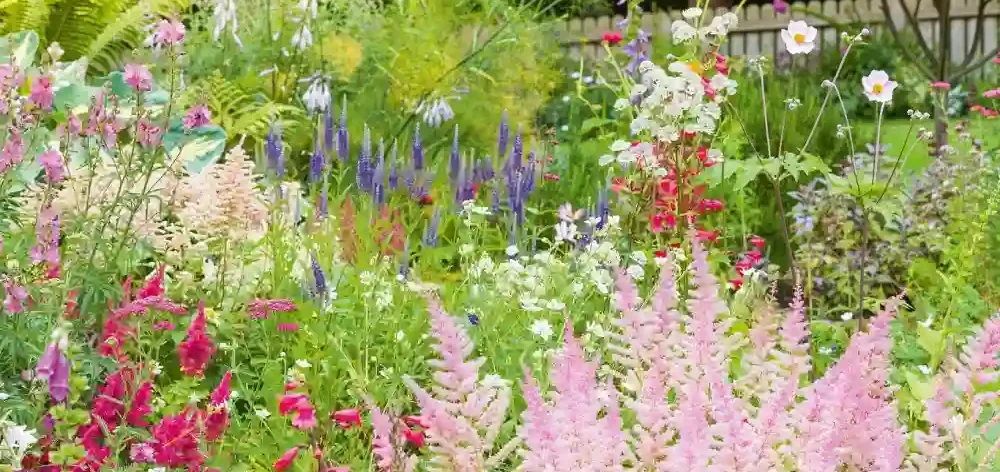In recent years, more and more people have become aware of the environmental impact of their daily choices. Gardening, once seen as a simple hobby, is now being embraced as a powerful way to make a positive contribution to the environment. Sustainable and eco-friendly gardening practices not only help preserve natural resources but also create a healthier, more resilient garden that can thrive without heavy reliance on chemicals, water, and other resources. In this article, we’ll explore how to create a sustainable and eco-friendly garden that supports biodiversity, conserves water, and reduces waste.
What is Sustainable Gardening?
Sustainable gardening involves adopting practices that promote the health of the environment, conserve resources, and enhance biodiversity. The goal is to create a garden that is in harmony with nature, using methods that have minimal negative impact on the ecosystem. This can include everything from selecting native plants to composting kitchen waste, using organic fertilizers, and promoting water conservation.
A sustainable garden not only supports the environment but can also be more cost-effective and require less maintenance in the long run. Here are the key steps to creating an eco-friendly garden.
1. Plan Your Garden with Sustainability in Mind
The first step in creating an eco-friendly garden is to plan carefully. Take time to assess your space and environment before planting. Consider the local climate, soil type, and the availability of natural resources like sunlight and water. Planning your garden to suit these conditions will reduce the need for artificial inputs like water, fertilizers, and pesticides.
Key Considerations for Planning:
- Climate and Microclimates: Understanding your climate is crucial for choosing the right plants. Use native plants that are well-suited to your local environment, as they require less water and are more resistant to pests and diseases. Additionally, consider creating microclimates within your garden (e.g., shaded areas or windbreaks) to protect sensitive plants and create more diverse growing conditions.
- Space Efficiency: Design your garden in a way that maximizes space and minimizes waste. Raised beds, vertical gardening, and companion planting can all help you make the most of a small area while also promoting sustainable practices.
- Biodiversity: Encourage biodiversity by planting a wide variety of species. Different plants attract different types of pollinators, beneficial insects, and wildlife, creating a more resilient ecosystem.
2. Choose Native and Drought-Tolerant Plants
One of the most important aspects of sustainable gardening is selecting the right plants for your garden. Native plants, which have evolved to thrive in your local climate, are often the most sustainable choice. These plants are adapted to the soil, weather, and pests in your region, which means they require fewer inputs like water, fertilizers, and pesticides.
Benefits of Native Plants:
- Low Water Requirements: Native plants are well-adapted to the local climate and can thrive with less water. This is particularly important in areas with water shortages or drought conditions.
- Support for Local Wildlife: Native plants provide food and habitat for local wildlife, including birds, insects, and pollinators like bees and butterflies. This helps support the local ecosystem and encourages biodiversity in your garden.
- Reduced Maintenance: Native plants are generally more resilient to pests and diseases, meaning you won’t have to use chemical pesticides or herbicides. They also require less pruning and care, making them easier to maintain.
Drought-tolerant plants are another great option for creating an eco-friendly garden, especially in areas where water conservation is a priority. These plants are designed to thrive with minimal water, making them ideal for regions that experience dry conditions.
3. Conserve Water with Smart Irrigation Techniques
Water is one of the most valuable resources for any garden, and using it wisely is a key part of sustainable gardening. Traditional watering methods, such as sprinklers, can be wasteful, often applying water unevenly and leading to overwatering or runoff. By implementing smart irrigation techniques, you can conserve water and ensure that your plants receive the right amount of moisture.
Water Conservation Tips:
- Drip Irrigation: Drip irrigation delivers water directly to the roots of plants, minimizing water waste and ensuring that the plants get exactly what they need. It’s an efficient way to water plants in a targeted manner.
- Rain Barrels: Collecting rainwater in barrels is an excellent way to make use of natural rainfall. This can reduce your reliance on tap water and save you money on your water bill.
- Mulching: Applying a layer of mulch around your plants helps retain moisture in the soil, reducing the need for frequent watering. Organic mulches like straw, wood chips, or compost also help enrich the soil as they decompose.
- Watering Early or Late in the Day: Water your garden in the early morning or late afternoon to minimize evaporation. Avoid watering during the hottest part of the day, as most of the water will evaporate before it can reach the plant roots.
4. Use Organic and Natural Fertilizers
Chemical fertilizers can harm the environment by leaching into the soil and waterways, polluting local ecosystems and harming beneficial microorganisms. To create a sustainable garden, opt for organic and natural fertilizers that nourish the soil without negative environmental impact.
Types of Natural Fertilizers:
- Compost: Composting kitchen scraps, yard waste, and other organic materials is one of the best ways to create rich, healthy soil. Composting not only reduces waste but also adds vital nutrients to your soil, promoting plant health and reducing the need for chemical fertilizers.
- Manure: Well-composted manure from herbivores like cows, chickens, or horses is a nutrient-rich fertilizer that can enhance soil fertility. Be sure to use manure that has been composted to avoid burning plants with fresh manure.
- Worm Castings: Worm castings (also known as vermicompost) are another excellent natural fertilizer. They are packed with nutrients and beneficial microorganisms that improve soil structure and health.
- Fish Emulsion or Seaweed: Fish-based or seaweed-based fertilizers provide a natural, slow-release source of nutrients that support healthy plant growth.
By using organic fertilizers, you help build healthy, living soil, which in turn supports better plant growth and contributes to a more sustainable ecosystem.
5. Reduce, Reuse, and Recycle Garden Waste
Sustainable gardening involves reducing waste and finding ways to reuse or recycle materials that would otherwise end up in a landfill. Garden waste, such as leaves, grass clippings, and prunings, can often be reused in various ways to benefit your garden.
Ways to Reuse Garden Waste:
- Composting: As mentioned earlier, composting is an excellent way to recycle organic garden waste. By composting kitchen scraps and yard waste, you can create nutrient-rich soil for your garden while reducing landfill waste.
- Mulching: Shredded leaves, grass clippings, and other organic material can be used as mulch to protect your soil and conserve moisture.
- Grasscycling: Instead of bagging grass clippings and sending them to the landfill, leave them on the lawn after mowing. Grass clippings break down quickly, adding organic matter to the soil and returning valuable nutrients.
- Reusing Containers: Repurpose old containers, such as jars, cans, or wooden boxes, as plant pots or planters. This not only reduces waste but also adds a unique, personalized touch to your garden.
By incorporating these waste-reducing practices into your gardening routine, you’ll not only help the environment but also save money and effort.
6. Encourage Wildlife and Pollinators
A sustainable garden is one that supports local wildlife and encourages biodiversity. Pollinators, such as bees, butterflies, and birds, play a crucial role in the health of your garden. By creating an environment that attracts and supports these creatures, you can enhance your garden’s ecosystem and contribute to the overall health of the planet.
Ways to Support Pollinators and Wildlife:
- Plant a Pollinator-Friendly Garden: Choose plants that provide nectar and pollen for pollinators. Native flowering plants, such as lavender, coneflowers, and sunflowers, are excellent choices for attracting bees and butterflies.
- Provide Habitat: Create spaces for wildlife to thrive by adding birdhouses, insect hotels, and butterfly feeders. Incorporate water features like birdbaths or small ponds to provide hydration and attract various species.
- Avoid Pesticides: Chemicals used to control pests can also harm beneficial insects like bees and ladybugs. Instead, focus on natural pest control methods, such as introducing predatory insects or using organic pest repellents.
- Leave Some Wild Areas: Allow some areas of your garden to grow naturally, with wild grasses, herbs, and flowers. These spaces provide food and shelter for wildlife and help promote a healthy, biodiverse ecosystem.
Conclusion
Creating a sustainable and eco-friendly garden is not only beneficial for the environment but also offers a rewarding, low-maintenance space for you to enjoy. By planning your garden with sustainability in mind, choosing native plants, conserving water, using organic fertilizers, and reducing waste, you can create a garden that supports local wildlife, promotes biodiversity, and reduces your environmental impact. With these practices, you can enjoy a thriving, eco-friendly garden that makes a positive contribution to the planet, while also saving time, effort, and money in the long run.





